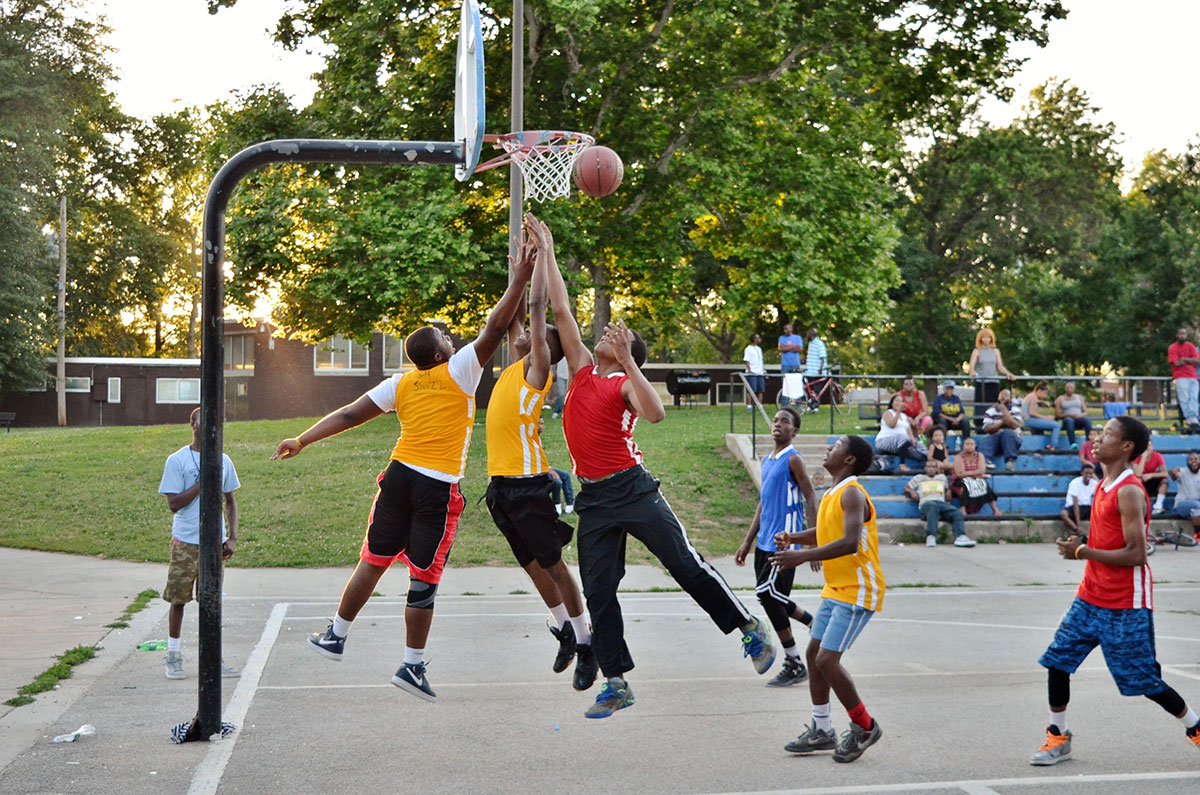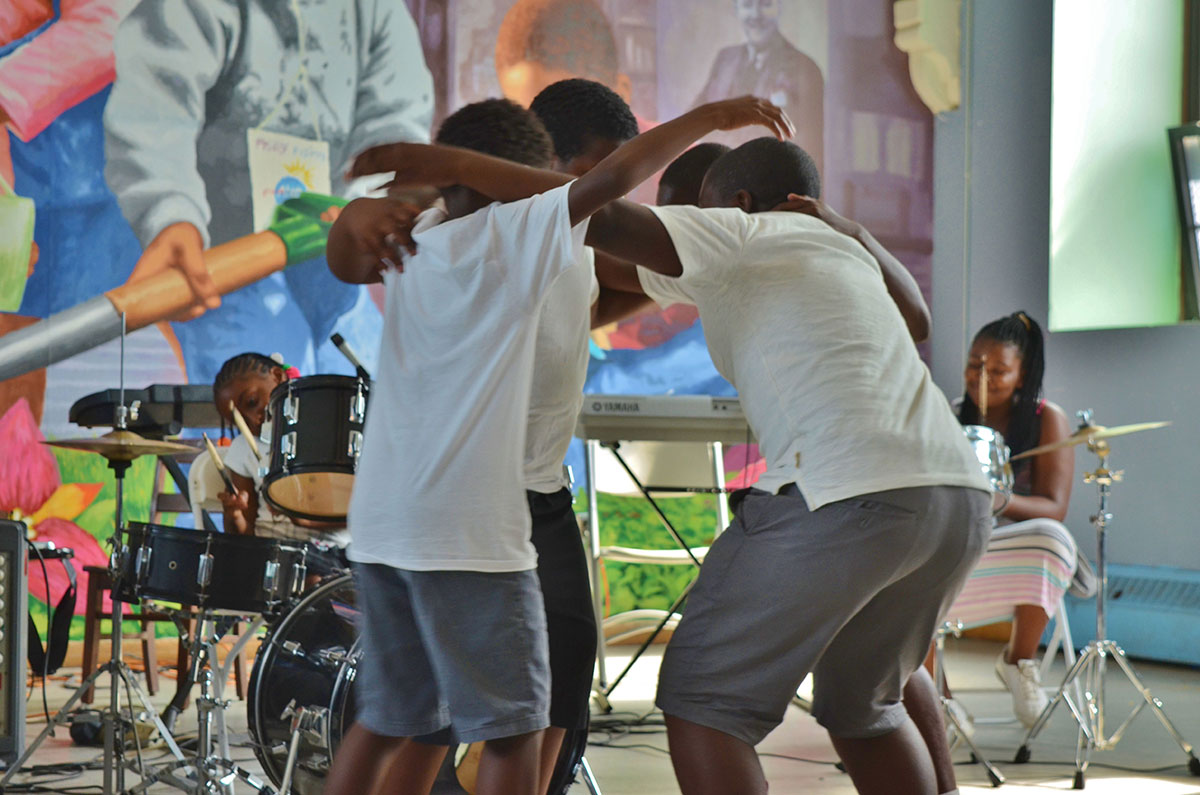Becoming Neighbors By Saying Yes: Reflecting on the Neighborhood Yes Fund

How can organizations establish relationships with people who live in the community where they are located? How should we introduce ourselves to one another? And what will we do to get to know each other? These are the questions Bartram’s Garden and Mural Arts Philadelphia asked as they launched Southwest Roots, a creative placemaking partnership in Southwest Philadelphia, which received funding from ArtPlace America.
Bartram’s Garden saw itself as a backyard for its nearby neighbors—they had recently launched several successful programs including free community boating and movie nights aimed specifically at engaging the immediate neighborhood. But Bartram’s was eager to establish a deeper sense of connection and belonging between the Garden and community around it, particularly as they looked ahead to the opening of Bartram’s Mile, a new greenway which would open up Bartram’s Garden to more visitors from across the city.
Our Community Liaison, Sophia Poe, who has roots in the community, shared examples of the positive energy and activity happening in the surrounding neighborhood. She urged us to think about how the ArtPlace grant might support the creative work that people were already doing in the neighborhood. We wanted to support local projects in ways that felt relational rather than transactional, and we wanted to build a group of community leaders who could pave the way for their neighbors to take a larger decision-making role in the evolution of the Garden and neighborhood. Taking Sophia’s suggestions, we created the Neighborhood Yes Fund.

In its first year, we used the Yes Fund to invite residents living or working within a roughly one-mile radius of Bartram’s to apply for stipends of up to $500, supporting projects around themes that connected community interest and Bartram’s mission: creative expression; youth engagement; connections to nature; and community well-being. We created a simple and clear application that could be submitted digitally or by hand, flyers to spread the word, and a review process that included a mix of Bartram’s staff and neighborhood leaders.
The most important requirement: all grantees were required to attend a picnic at the end of the year to celebrate and share their work with us and the other grantees. Over the course of 2016, 14 grants were distributed through the Yes Fund. Mural Arts and Bartram’s Garden met incredible leaders—from block captains to basketball coaches to gardeners—and created a new platform for community collaboration with Bartram’s Garden as the backdrop.

The Neighborhood Yes Fund provided new opportunities to examine what it means for an organization be a good neighbor. Here are a few lessons we learned:
1. Provide clear expectations for what you can offer.
We created a very clear application with simple guidelines and limitations—all of the projects had to be free and open to the public; the paperwork was written in plain language to lower barriers to applicants who weren’t experienced in grant writing; and instead of a formal contract, we asked grantees to sign a Letter of Commitment, a social agreement that outlined our shared expectations.
However, the “Yes” in the Yes Fund and our limited funds forced us to think hard about how we would choose projects to support. We debated many different approaches and realized we did not want a high volume of applicants to turn us into the “No” fund, so we decided on a word-of-mouth process, led by Sophia, our Community Liaison. She invited neighbors who were active in their communities to apply, and talked through their ideas with them to make sure they would submit an eligible request. The small pool did, at times, create a feeling of exclusivity, so to counter this, residents could only receive one award and we made a concerted effort to build a growing network of new partners. (see item number 2 in this list.)

2. Act on opportunities for connection.
We discovered opportunities for Bartram’s Garden to connect its resources to projects in unexpected ways. Sometimes it was a simple as offering up Bartram’s as a meeting place for project planners, and at other times, Bartram’s became the location of the event itself. Organizers of a basketball tournament wanted to offer their participants a tour of the garden, and we were able to make that happen. Responding to requests became an important way that Garden staff learned about how their neighbors wanted to use the garden.

3. Throw a picnic.
One of the most powerful elements of the Yes Fund was the final picnic. At the conclusion of each round, recipients were asked to attend a picnic hosted by Bartram’s Garden to celebrate and share their experiences with each other. Over a homey spread of chicken, greens, mac and cheese, and garden salad, neighbors introduced and presented their projects to one another, engaging in facilitated and lively discussions about the present and future of their neighborhood and the kind of change they wanted to see. Bartram’s acted as both a meeting place and a facilitator for neighbors to come together to inspire each other, and eventually to begin to organize around new ideas for future collaboration.
4. Celebrate success.
Small but thoughtful gestures to celebrate and thank people matter, such as giving everyone bouquets of fresh-cut flowers cut from the garden, or ordering a celebratory cake. We arranged professional documentation of all of the events and made sure that all participants received this material for their own use. In October, as part of the John Bartram Jawn concert, we organized a Southwest Roots exhibition in the Bartram’s Garden barn that displayed all of the Yes Fund projects in vivid photos.

5. Be open to changing the process.
In the first year of the Yes Fund, we supported individual projects in our effort to discover and build a wide variety of new relationships. Afterwards, both staff and the Yes Fund participants were eager to deepen the relationships they had built among themselves. At the final picnic, the group proposed a new idea for the coming year: to focus the Yes Fund on supporting larger collaborations between the existing group of Yes Fund leaders and Bartram’s Garden that would have a larger impact on the neighborhood. We kicked off this idea in January 2017 with a community brainstorm, and two big ideas emerged: a youth program based at Bartram’s that would create community greening projects in the neighborhood, and a summer-long Southwest Philly multi-cultural celebration. Both of these ideas are underway.
The Neighborhood Yes Fund is still evolving. We continue to reflect on what it means to be a good neighbor, and to navigate the challenges and rewards of sharing power and decision-making. However, after just a year of work, Bartram’s has more than doubled its neighborhood connections. We are continuing to learn together what a creative community looks like, and how we can support each other to help it grow.

Aislinn Pentecost-Farren is an artist and social practice curator specializing in parks, public history, and ecology; she is a 2017 artist-in-residence with Southwest Roots and the Arts & Artists Outdoors Program Coordinator for Mural Arts. Independent curator Sarah Schultz is the Interim Director of Public Programs and Education at the Friends of the High Line and currently the curator of Southwest Roots.
Southwest Roots received funding from ArtPlace America.




